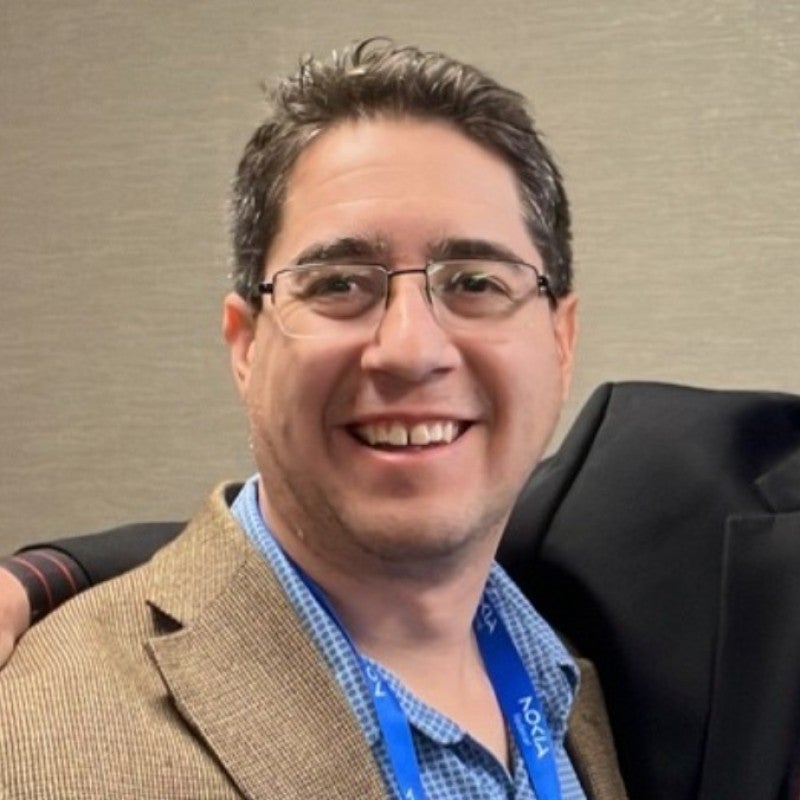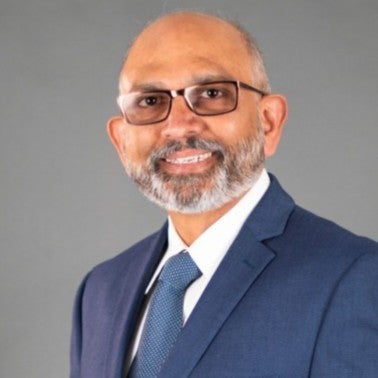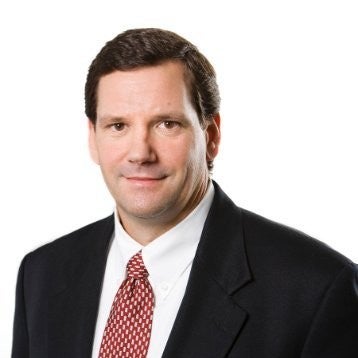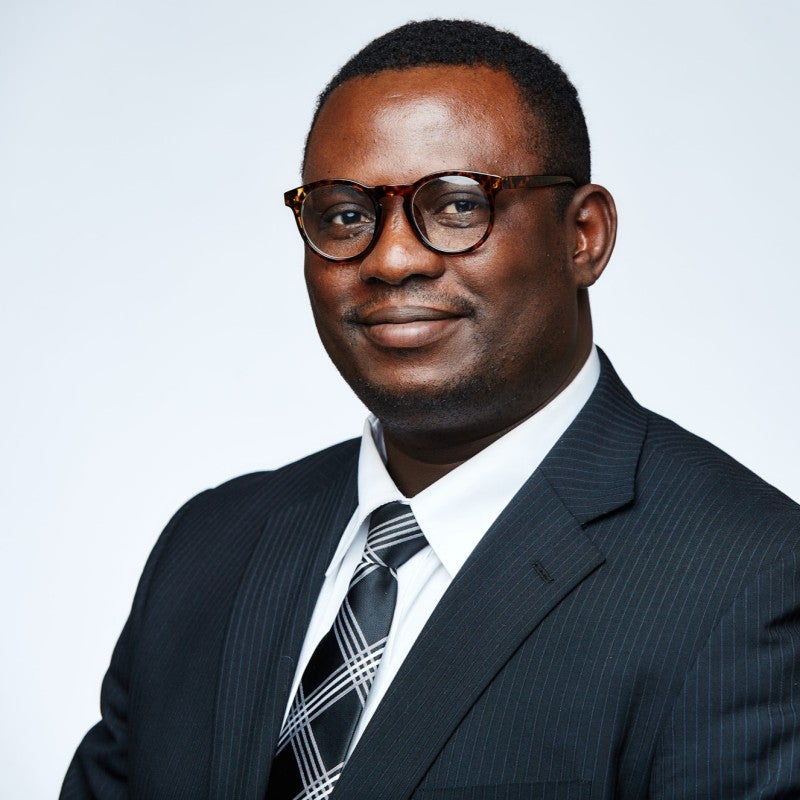SATELLITE × Tech Seminar
Tech Seminar 2026
Finally, a Technical Conference That Doesn’t Waste Your Time
16 peer-evaluated breakthrough solutions from engineers who’ve actually solved the problems you’re facing.
Stop attending conferences full of marketing presentations disguised as technical content.
Get actionable solutions you can implement next week.
What You Get
16
Breakthrough Presentations
Peer-Evaluated Solutions
Every presentation is reviewed by practicing engineers. No theory, no fluff—just proven solutions from engineers who’ve implemented them successfully.
100%
Peer-Evaluated Content
Interactive Poster Sessions
Deep-dive discussions with innovators working on cutting-edge research. Get direct access to the engineers behind breakthrough technologies.
0
Marketing Pitches
Implementation-Ready Insights
Walk away with actionable approaches you can apply immediately. Every solution has been validated in real-world applications.
Tech Seminar Agenda
Engineering-First Talks on Software-Defined Space, Resilient Networks, RF Awareness, LLMs for Satcom, and More.
Getting to orbit should be faster, more predictable, and less costly than it is today. Yet complex procurement cycles, endless non-recurring engineering (NRE), and mismatched components still bog down projects and inflate budgets.
There’s a better approach: fly first, build second.
High-fidelity mission simulation lets you design and test complete spacecraft configurations—bus, payload, power requirements, comms links, and more—before hardware is purchased or built. Engineers can validate subsystem performance, model orbital dynamics, and identify design gaps long before integration, eliminating costly surprises before ever purchasing the first component. This session will also examine the risks of custom-built flight software, which can create complexity and distract teams from mission objectives, versus deploying modular, proven off-the-shelf systems that work seamlessly with a wide range of hardware and mission designs.
Attendees will learn practical strategies to design faster, buy smarter, and reach orbit with confidence—accelerating timelines and freeing teams to focus on mission outcomes, not integration headaches.
Proposed 6G changes place unprecedented demands on the handset device: high-gain, multi-band RF performance, support for non-terrestrial networks (NTN), robust waveform adaptability and edge processing. Yet mainstream handheld devices, such as smartphones, are increasingly compromised in exactly these areas. Modern handsets suffer from degraded RF performance due to antenna miniaturization, dense integration, and coexistence trade-offs. The result is a widening gap between what 6G networks will require and what conventional device architectures can deliver (designing all handsets for the 1–5% of scenarios that require NTN-grade RF is technically disproportionate and architecturally inefficient).
This talk argues for a shift toward a modular, role-based device ecosystem. It examines the technical challenges of integrating NTN, 6G compliant radios, Doppler-tolerant PHYs, and intelligent scheduling into consumer-constrained platforms. Emerging alternatives, such as vehicular relays, wearable RF nodes, and disaggregated PHY runtimes, offer more viable paths to meeting 6G’s performance targets.
These changes signal a deeper architectural disruption. The tightly integrated chipset/handset pipeline is not well suited to the flexibility and diversity 6G demands. Instead, we anticipate a more fragmented device landscape, composed of interoperable roles, optimized for context and capability. Without this transition, 6G risks reinforcing the limitations of legacy assumptions, rather than delivering on its promise of true ubiquity.
5G non-terrestrial networks (5G-NTN) satellite networks will soon be able to handle all types of applications and provide service to a massive number of users. In this complex and dynamic network ecosystem, and end-to-end adaptation of 5G-NTN towards the EU-GOVSATCOM services, requirements and use cases is of capital importance to efficiently deploy European governmental satellite services.
To enable such a vision, 5G-GOVSATCOM targets the development and evaluation in a natural user environment of different key enabling technologies that aim to provide full integration of 5G-NTN in the EU-GOVSATCOM framework. In the radio technologies domain, 5G-GOVSATCOM targets the development of necessary adaptions and enhancements of radio access procedures to attend to geostationary mobile terminals in the exclusive governmental X-band. Furthermore, the integration of 5G-NTN user equipment with an antenna operationally focused on on-the-move and on-the-pause scenarios are planned.
In parallel, in the inter-networking segments, 5G-GOVSATCOM aims to provide a seamless handover between terrestrial networks and NTN via a smart gateway while enhancing core-network functionalities. Finally, all project developments are planned to be first validated in a controlled lab with satellite connectivity and, subsequently, experimentally tested in close collaboration with final users. These latter tests will constitute the first 5G-NTN trials with final users devoted to i) ubiquitous telemedicine in maritime areas and ii) crisis management connectivity bubble.
There was a time when copper ISDN lines were the reliable backup, and broadband was the last resort. LTE was once dismissed as well, for either being too expensive or for not providing adequate performance. Now, we’re seeing history repeat—this time with satellite connectivity. But the narrative is changing fast. Satellite is emerging not just as a viable alternative, but as a critical foundation for next-generation connectivity.
As players like Starlink, Amazon, and others compete in a new-era space race to expand satellite coverage, enterprise demands are also evolving. The rise of AI-driven applications is creating unprecedented needs for high-availability bandwidth—anytime, anywhere. Satellite is uniquely positioned to support these demands, reaching areas where traditional connectivity solutions fall short. Further, satellite is rapidly closing the gap in solutions for both performance and reliability. Not only does it work well for tough-to-reach places, but similar to 5G, it’s evolving into a suitable enterprise connectivity option.
This session will explore real-world use cases from organizations such as DB Schenker, Pernod Ricard, and CF Industries—companies that began with satellite as a backup solution but are now leveraging it as a primary component of their global network architecture.
Join us as we unpack the strategic role of satellite in building future-ready, AI-optimized networks. Our panel will dive into the “how” behind deploying secure, scalable satellite-first architectures that support distributed users and AI-powered operations across the globe.
From military vessels operating in remote seas to organizations providing financial services, many industries rely heavily on GPS to synchronize their timing and location data. However, the rise in GPS/GNSS threats such as jamming, spoofing, and interference, can lead to devastating impacts to infrastructure stability, operations, and asset safety.
This presentation will share how GPS/GNSS interruption isn’t limited to the military and will explain the potential consequences of vulnerabilities on commercial organizations as well. It will stress the importance of integrating a robust secondary assured positioning, navigation, and timing (APNT) strategy to ensure operational security and business continuity. It will also explain what steps need to be taken to enhance resilience for the future.
The presentation aims to provide a comprehensive overview of the principles, benefits, challenges, and future potential of Free-Space Optical Communications (FSO) technology in enhancing the accuracy, security, and reliability of Position, Navigation, and Timing (PNT) systems. Participants will gain valuable insights into the technology’s current applications and future trends, supported by case scenarios and innovative solutions.
In theory, the integration of FSO could revolutionize the accuracy, reliability and security of PNT systems. Government and private partnerships are starting to study and research this concept and believe that FSO technology can enhance accuracy of PNT without the additional cost required for building up the ground infrastructure needed to support the tens of thousands of satellites that are set to be launched in the coming years. In addition, the use of FSO would be more affordable and more reliable because ranging and synchronization of the laser system will be used from satellite to satellite. This workshop will introduce participants to the fundamental principles of FSO and its advantages over the current terrestrial infrastructure.
Objectives:
• To explore the critical role of PNT systems in various sectors and the limitations of current technologies.
• Limitations of current PNT technologies: signal vulnerabilities and coverage gaps. • To demonstrate how FSO can complement and enhance PNT systems.
• To present real-world use cases of FSO in PNT systems. This workshop focuses on innovative technologies and their applications in navigation systems.
This session focuses on the operational deployment of compact AI/ML models into a cognitive system to support RF awareness in tactical and space environments. Eric Mason will provide an overview of the cognitive system that drives HawkEye 360’s (HE360) mission-critical analytics, ensuring EMSO effectiveness in a congested RF environment. The focus will be on training, deployment, and monitoring of edge ML/AI processing in a low SWaP system with limited ground connectivity. He will discuss the impact of the mission in a changing electromagnetic environment and how limitations on hardware impact both system design choices.
Potential Key Talking Points:
• Cognitive RF systems to optimize Tasking, Collection, Processing, Exploitation, Dissemination (TCPED) processes
• Designing ML models for RF characterization with limited processing and memory for edge applications
• Managing dynamic signal environments via continual model tuning
• Role of lightweight inference pipelines in tactical RF missions (e.g., maritime domain awareness, border monitoring)
• How space-based RF data combined with AI accelerates decision timelines in EMSO missions
This presentation focuses on the technical development and implementation of SatcomLLM, a European Space Agency-funded project building a domain-specific open-source large language model (LLM) for the satellite communications sector. The talk will focus on how we engineered, fine-tuned, and deployed a specialized LLM designed to assist in operational, regulatory, and engineering tasks relevant to the satellite industry.
The core of the presentation will center on the design of the SatCom Expert Virtual Assistant (SCEVA), a system powered by an adapted open-source LLM that supports users in areas such as link budget review, anomaly detection in telemetry, engineering design, proposal writing, and satellite mission planning. The presentation includes concrete examples of how SCEVA interacts with technical input and outputs structured, actionable content.
Attendees will leave with a practical understanding of how open-source LLMs can be safely and effectively customised for satellite communications and how to design use-case-driven training pipelines.
Typical SatCom ground system deployments rely on single vendor solutions that involve complicated and time-consuming integration work when looking to support other vendors and other satellite network operators. The mission of the Digital Intermediate Frequency Interoperability (DIFI) Consortium is to provide a simple, open, interoperable Digital IF/RF standard that replaces the natural interoperability of analog IF signals and helps prevent such vendor lock-in. In this presentation, we will examine the DIFI standard, its implementation to enable the virtualization of ground-system infrastructure, and demonstrate a multi-vendor solution for showcasing DIFI in action.
This paper will discuss the DIFI ecosystem converter test with our radio frequency (RF) and network emulation solutions. In the RF domain of the DIFI RF/IF converter (IFC), Keysight’s M9484C VXG vector signal generator will be used to generate a “golden” RF signal. On the other side of the IFC, we have the Ethernet domain. This is where Keysight’s Pathwave Vector Signal Analysis (VSA) software comes into play. Keysight’s PathWave Vector Signal Analysis software offers a comprehensive set of tools for demodulation and vector signal analysis of modern custom modulation, DVB-S2X, and 5G communication standards, and more. The VSA software can demodulate the DIFI signal coming from the IFC in the Ethernet domain, showing the “health” of the waveform that’s being transferred, the RF signal that is being transferred through the converter via DIFI/VITA49. Keysight’s Ixia BreakingPoint software runs on a traffic generator for network security test, then acts as the “golden” modem response and upstream source that provides the stateful entity on the other side of the IFC to send DIFI packets upstream to the converter. Therefore, Keysight provides two sides (downstream RF and upstream DIFI Ethernet) to the IFC.
This paper will also discuss Ethernet traffic test scenarios for integrators. These examples represent real-world, planned implementations of DIFI in satellite communications (SatCom) signal services. using real-world examples.
In this technical presentation, Richard Jacklin will examine cutting-edge radar developments, focusing on the distinctive implementation of mmWave technology within the 30-300 GHz frequency range for space-based applications. Imagine the need to retrieve a non-functional satellite or rocket body from orbit, or ensuring the safe rendezvous of two spacecraft for an extended mission – precise “sight” in all conditions is crucial. Non-geostationary orbits present challenges; the eclipses leave spacecraft in darkness, creating obstacles for visible light cameras. When a craft is directed towards the sun, LiDAR systems struggle due to solar interference in the laser spectrum. To prevent space accidents and ensure mission success, it is evident that additional sensor capabilities are imperative.
Enter radar – a familiar technology in radio-based detection and ranging, extensively utilised in space endeavours from docking to historic lunar landings during the Apollo missions. This presentation will review the state-of-the-art in radar advancements, specifically the unique application of mmWave solutions operating within the 30 – 300 GHz spectrum for space application. It will explore radar’s fundamental principles, the technological advancements enabling compact and efficient radar systems for both small satellites and larger spacecraft, and its role in complementing existing sensors through “sensor fusion” for AI-driven guidance and navigation systems. The discussion will extend to the potential application of radar sensors in lunar environments, where dust poses a significant challenge – where mmWave radar excels.
Key takeaways for the audience:
• Introducing an innovative sensor for In-Space Operations and Services along with space debris mitigation.
• Understanding the complexities of spatial perception and the limitations of current sensor technology, including the survival requirements of delicate sensors in varied environmental and launch conditions.
• Exploring diverse applications, such as the detection of micro-meteoroid debris of millimeter size and its potential implications beyond conventional orbits, including lunar and martian exploration.
The Conservation of Angular Momentum (CAM) Drive is a technological breakthrough with propellantless orbit transfer capability. The CAM Drive concept has been developed for over 10 years through model fabrication, measurements, test data, and analyses. In demonstrating CAM Drive concept, VSS made a significant discovery with physical measurements of inverted force couples by throttling Electric Ducted Fan (EDF) motors, which provides inertial forces for Hyper Transfer Vehicles (HTV). CAM Drive enables efficient and rapid hyper transfer orbits by using clean, non-toxic solar electric power. The experimental data and HTV predictions from CAM analyses provide a new and exciting way of looking at fundamental conservation, and the 1st principle of aeronautics, which is circulation.
In 2023, a concept development was sponsored by the National Science Foundation (NSF). This Phase I Small Business Technology Transfer (STTR) grant to Vortex Space Systems (VSS) was performed in collaboration with the Georgia Institute of Technology in Atlanta. The successful NSF Phase I showed a single HTV mission for orbital debris removal resulted in a cost metric reduction of $210/kg for 1200 existing orbit debris rocket bodies in 5 years. This is compared to a 2023 NASA cost benefit study using seven servicing vehicles with bi-propellant orbit debris remediation at $7,464/kg for 160 objects over 5 years. HTV is 7.5 times more efficient than NASA’s bi-propellant system due to refueling the servicing vehicle after two orbit/deorbit debris removal cycles.
This presentation provides examples of high velocity geosynchronous and lunar hyper transfer orbits, i.e., greater than Hohmann transfer velocity. Hyper transfer orbits are based on known hyperbolic orbital dynamics. These first order approximations provide continuous hyper transfer orbital momentum along the velocity vector, which is possible using CAM Drive technology. There is value in fuel-free and propellantless thrusting, especially with geosynchronous telecommunication satellites. For a 15-year comsats, the launch services cost are reduced by removing 3000kg of Xenon ($15M), reducing Geosynch transfer time by 3 months ($3M), and 5-years of mission extension at $20M per year for a total lifecycle savings of $118M.
CAM Drive technology implemented on HTV can provide continuous constant thrust acceleration maneuvers and save substantial orbital operational resources. CAM Drive technology accomplishes this performance with solar electric power without expendable propellants. The paper/presentation addresses the CAM Drive theory of operations, engineering used for concept development, and demonstration.
VSS is developing a commercialized Minimum Viable Product (MVP) CAM Drive for smallsat applications. Under an active grant from Montgomery County (Maryland) Technology Innovation Fund, VSS is designing, building, and testing a suite of MVP CAM drive pathfinders for commercialization. These pathfinder MVP designs are being developed with University of Maryland mechanical engineering students working on Summer and Fall internships for VSS and will be presented at Satellite 2026 Conference. The MVP test results will be presented at Satellite 2026. The spaceflight qualified MVP was proposed to an NSF 2-year Phase II SBIR.
Mithril Technologies is excited to present on our RF reflector steering and shaping capabilities, which will permit new satcom capabilities for higher orbits. We will be presenting on ongoing work which is building on our IEEE Phased Array paper from last year on using our reshapable reflectors for adaptive nulling of signal jammers. The presentation will include a video demonstration of how we have been able to demonstrate this capability in a lab environment and a rendering of how this will be used on-orbit for jamming-resilient satcom systems. This represents a next-generation RF situational awareness & satcom capability that can be used for robust multi-orbit satcom architectures, considering our ability to focus & steer our beam for dynamic switching between space-space and space-ground as well as null out adversarial jammers.
Aalyria has developed publicly available, open-source, and production-validated APIs for network orchestration that every player in the ecosystem can leverage and contribute to. Our goal is to create a developer ecosystem around this open-source repository, and to that end, Aalyria has contributed these APIs to the Outernet Council, a neutral non-profit organization, which manages the project’s open governance structure (outernetcouncil.org).
This presentation will explain the technical foundations of these APIs, demonstrate how they solve orchestration challenges across the ecosystem, and invite participation from everyone in the industry. Satellite operators can use these APIs to orchestrate first-party assets with out-of-the-box support for next-generation architectures, like digital ground segments, highly configurable software-defined payloads, and free-space optical link modeling. Equipment vendors can build a single integration to these APIs to make their hardware instantly deployable in any commercial, government, or hybrid network. Mobile and satellite network operators can bring the vision of 5G/6G NTN to life by dynamically enacting seamless handovers across the terrestrial and non-terrestrial network through these APIs.
Digital Intermediate Frequency (Digital IF) is transforming satellite communications (SATCOM) and RF systems by replacing traditional analog signal paths with digitized signals that can be transmitted over standard IP networks. By moving the analog-to-digital conversion closer to the antenna, Digital IF allows signals to be packetized and routed across both local and wide-area networks using commercial off-the-shelf (COTS) Ethernet switches and fiber optics—eliminating the need for bulky analog cabling and costly RF switch matrices. This modernized architecture significantly reduces infrastructure complexity and cost, while also enhancing flexibility, scalability, and modularity.
However, this innovation introduces a new challenge: massive data volumes. A single wideband signal (e.g., 500 MHz bandwidth) digitized at high resolution can exceed 30 Gbps, and many systems process multiple such channels simultaneously. Transmitting this data reliably across long distances places intense pressure on conventional IP networks, which were not designed for high-throughput, real-time signal transport. Compounding the challenge is the need for absolute data integrity.
This presentation will unveil a next-generation software-defined data transport solution designed specifically for Digital IF environments. This project, funded through multiple DoD SBIR programs, has demonstrated significant performance advantages in live testing.
By enabling secure, fast, and reliable digital IF transport over standard IP networks, this technology unlocks the full potential of digitized SATCOM systems—delivering enhanced performance, reduced costs, and increased agility for both defense and commercial applications. It represents a critical enabler for modern, software-driven RF systems operating at scale in today’s data-intensive, latency-sensitive environments.
The Artificial Intelligence (AI) agent market is projected to reach almost $50B by 2030. However, many satellite companies are wondering how to apply agentic AI to increase efficiency and solve problems in the space domain.
This presentation outlines how AI can reason, plan and complete tasks in Geospatial Data Analysis, Space Manufacturing, Aerospace, and Satellite Communications. It features two practical SatCom AI demonstrations: a multi-agent system for link-budget and capacity planning, as well as an RF interference detection solution using multi-modal generative AI.
Attendees will learn how AI technologies can address key challenges in the satellite industry, enhancing efficiency and innovation in space-based communications.
While most SATCOM systems today rely on high-frequency bands, line-of-sight, and complex infrastructure, this presentation will explore a new paradigm: a low-signature, infrastructure-independent capability that ensures communication continuity even in contested, jammed, or denied environments.
The discussion will focus on the growing gap between SATCOM as designed, and SATCOM as actually used in the field. Through real-world examples and operational insights, we will highlight how lighter, simpler, and more mobile systems are enabling frontline units, not just elite teams, to maintain critical voice, data, and situational awareness without delays, training bottlenecks, or complex deployment.
Attendees will learn:
• Why legacy SATCOM systems often fail at the moment of need.
• How to rethink connectivity when infrastructure is unavailable or unreliable.
• What “tactical resilience” really looks like at the user level.
• How new low-profile SATCOM solutions integrate with common digital tools like ATAK, support Blue Force Tracking, and provide secure communication on the move.
Join Your Engineering Peers
Connect with the technical leaders actually solving satellite and space engineering challenges
Senior Engineers
Principal, Staff, and Lead Engineers from major satellite operators and manufacturers
Systems Architects
Technical architects designing next-generation satellite systems and ground infrastructure
Technical Directors
Engineering directors and technical managers leading innovation at aerospace companies
Research Scientists
Applied research scientists developing breakthrough technologies for space applications
Solutions Engineers
Technical sales engineers and solutions architects bridging innovation and implementation
Product Leaders
Technical product managers and general managers overseeing satellite technology development
Advisory Committee

Juan Deaton
Ph.D. Chief Alignment Officer, Alignment Consulting and Engineering

Dr. Rajeev Gopal
Ph.D. Vice President, Advanced Programs, Hughes/EchoStar

Karen Jones
Space Economist & Senior Policy Analyst, Center for Space Policy and Strategy, Aerospace Corp.

Stuart Daughtridge
Chairman and Director of the Digital Intermediate Frequency Interoperability Consortium (DIFI) & Vice President of Advanced Technology, Kratos

Femi Ishola
PhD, R.Engr, Founder & CEO, Phemotron Systems
Price
Tech Seminar Pass
$799
- ✓ Tech Seminar sessions
- ✓ Keynote luncheons
- ✓ Full Exhibit Hall access
- ✓ Welcome reception
Frequently Asked Questions
How is this different from other conference technical sessions?
Every presentation is peer-evaluated by practicing engineers and selected specifically for implementation potential. No marketing presentations or theoretical content that can’t be applied.
What level of technical detail will be covered?
Presentations are designed for senior engineers and technical professionals. Content includes detailed methodologies, performance data, and implementation approaches.
Can I get implementation details after the presentations?
Yes! Poster sessions and networking breaks are specifically designed for detailed technical discussions with presenting engineers.
Are presentations recorded or available afterward?
Due to the proprietary nature of breakthrough solutions, presentations are not recorded. Attendees receive presentation materials and contact information for follow-up discussions.
What’s included with registration?
All technical sessions, poster presentations, networking lunch, presentation materials, and direct access to presenting engineers for technical discussions.